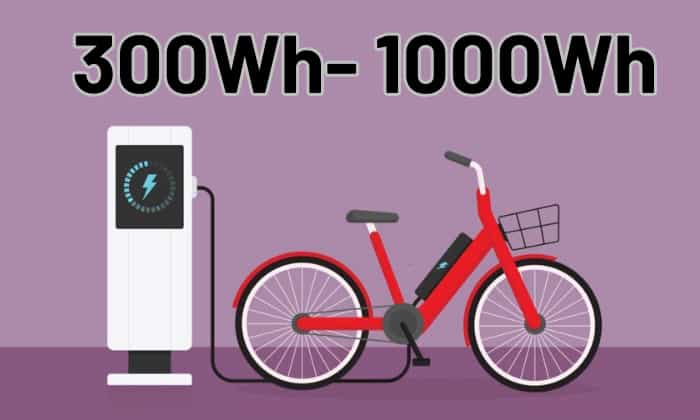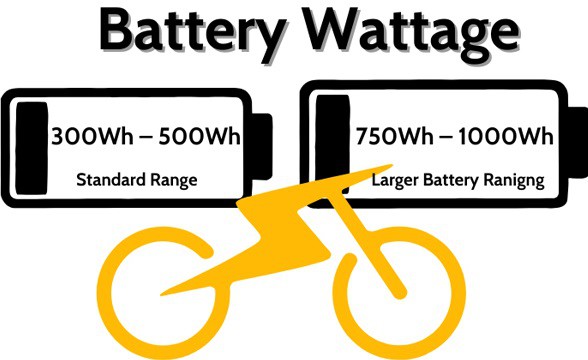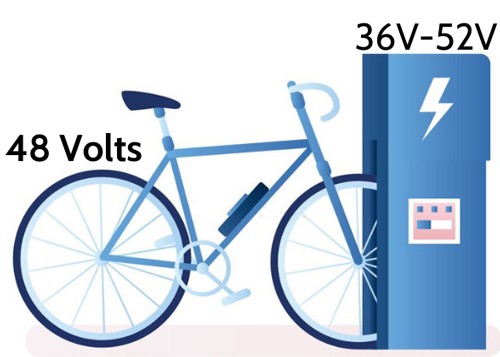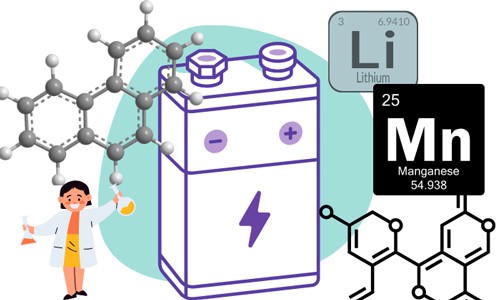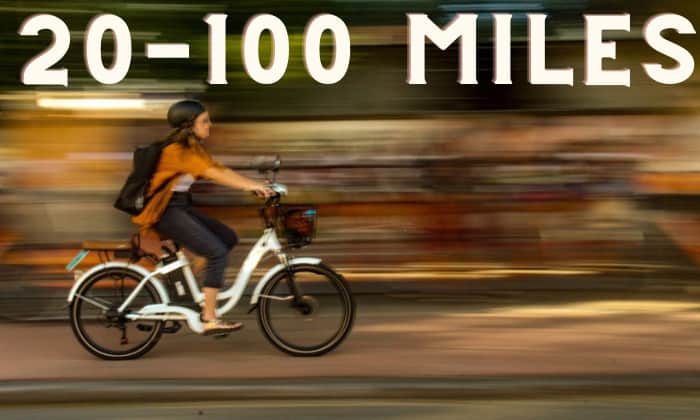What keeps an e-bike up and running is no other than its battery. Just by that, you can probably guess this simple battery pack’s crucial role.
If you’re considering buying a new battery for your E-bike, be as critical as possible. With that, you have to know what size battery is best for electric bike.
Generally, a good battery size would be of the standard 48V and 300Wh – 500Wh, however, it depends on various factors. So, read on to determine what size battery you should get!
Table of Contents
What E-Bike Battery Size Do I Need?
Generally, you should purchase a battery that’s the same as the one your e-bike came with. If you want to know its size, you may check out an online battery size calculator to help you out.
An E-bike battery size comes in a variety of sizes, ranging from 300Wh – 700Wh for commuting and over 1000Wh for higher capacity.
If you want to calculate the amperage for your e-bike battery, use the following formula.
Formula:
Watt Hours (Wh) /Voltage (V) = Amp-Hours (Ah)
Example:
560 Wh/ 36 V = 13.9 Ah
750Wh/ 48V = 15.6 Ah
The ideal range of e-bike batteries are from 10 – 20 Ah.
Indeed, the usage or purpose of your e-bike’s battery plays a crucial part. Before purchasing, you have to consider several factors. Remember that when it comes to e-bike batteries, prices come with quality.
And there are numerous factors that prove their significance to your bike’s overall performance. So in selecting your e-bike battery, here are some of the points you might want to look out for.
1. Battery Wattage
The standard range is around 300Wh – 500Wh. And with higher watt-hours means more energy and more power.
If you need a battery with power for heavy bike rides, you may need a larger battery ranigng from 750Wh – 1000Wh and over. But also note that since it offers faster speed and better performance riding on slopes, it’s not so great for your daily commute. This is because it often drains the battery faster as well.
2. Voltage
The common voltages for most e-bikes are 48 Volts. If you want something lower, pick the 36V, and if higher, go for 52V.
The thing is, the voltage and battery wattage of an e-bike usually go hand-in-hand because the higher battery’s voltage equates to more watts and, thus, generates more power.
So, if you’re picking out your battery, you’ll usually notice that if it has a higher battery wattage, it also has a high voltage. This says how long your e-bike can go on and fast it can run.
3. Cell Chemistry
For e-bikes, the most common options are Lithium-ion and Nickel Manganese Cobalt. For Lithium-ion, its cell chemistry comes in different variants. You can always ask an expert to assess which is best for your specific e-bike.
But to give you some insight on what to keep an eye on, you should consider what impact it may have on your e-bike’s range, the battery’s power to manage tedious rides, and its history of in-field conflicts.
Watch out for its specific energy, its specific power, and its safety.
4. Cell Manufacturer
Brands are everything and they tell how reliable a product is. This goes the same for e-bike batteries .Since it’s known that most battery qualities come with a price, you might as well go for a brand that has proved its credibility over the years.
We recommend the brands Panasonic, LG, and Samsung.
How Much Range Do You Need?
On average, most e-bikes range between 20-100 miles. Below is how to calculate the range:
Formula:
Amp-Hours (Ah) x Voltage (V) = Watt Hours
Watt hours/Energy use = Miles in Range
Example:
20 Ah x 28 V = 560 Wh
The general estimate is that every bike battery gives about a mile of travel for every 20 Wh of energy.
Let’s say that your average speed is around 20 miles per hour. The equation should look like this:
560 Wh x 1 mile/20 Wh = 28 miles
Therefore, you will ride approximately 28 miles in range.
Here’s a table of the typical battery range, size, and amp hours that you will need. Take note that these are based on a lithium battery for e-bike.
| E-Bike Motor Size | Battery Energy (Wh) | Battery Voltage (V) | Running Time |
| 200W – 1500W | 360 | 36 | 10 hours |
| 250W – 750W | 468 | 36 | 13 hours |
| 250W – 900W | 626 | 36 | 17.4 hours |
| 250W – 500W | 500 | 48 | 10.4 hours |
| 250W – 1200W | 676 | 48 | 13 hours |
Since everyone has their specific reason for riding an e-bike, the question of how much range you need heavily relies on your demands.
- Biking speed – It’s easy to think that when you’re riding for long distance, you should bike faster. That actually isn’t the case. When you ride faster, this lowers the battery’s capacity range as it consumes excessive power, draining the battery’s power.
- E-bike assist feature – If you notice that you are given a lot of assistance in pedaling, this means that you’re consuming a lot of your battery’s power levels. So before you decide on a battery size, know all about the features of your e-bike first. If it requires you to buy a high-power battery to fit the needs of its features, then go ahead and do so.
- Weight and Load Capacity – Every e-bike has its own weight capacity. Beyond that may damage your e-bike because the power may quickly exhaust since it tries to accommodate the extra weight which causes the supposed covered mileage to be cut down.
What is the E-bike Battery Lifetime?
The typical lifespan of an e-bike battery lasts around 3-5 years. This is, of course, dependent on how it’s used and how it’s taken care of.
What affects an e-bike battery’s lifespan? Here are several factors.
- Environment – The temperature during your charging sessions actually greatly affects your battery’s lifespan as the higher the temperature, the more it can age your battery’s lifespan. On the other hand, very cold temperatures negatively affect the battery’s performance.
- Charging Rate – The charging rate is the duration of changing your battery. The shorter the time your battery is charged, the shorter its lifespan lasts.
- Battery Type – Since there are different types of batteries, their composition has its own subjected lifespans. Lithium-ion batteries tend to last longer than lead-acid batteries.
- Battery Care – How a user maintains its battery also plays a large role in how long it will last. Avoid overcharging and deep charging to lengthen battery life.
Here is a table that shows the usual lifespan of a lithium-ion e-bike battery charging in various temperatures.
| Temperature | 40% charge (after 1 year) | 100% charge (after 1 year) |
| 0 °C | 98% | 94% |
| 25 °C | 96% | 80% |
| 40 °C | 85% | 65% |
| 60 °C | 75% | 60% (after 3 months) |
Conclusion
So, what size battery is best for electric bike? Now you know the average range and how to calculate its size. Just remember to identify your needs and the specifics of your e-bike correctly.
When you know all that by heart, you’re bound to purchase one with the perfect battery capacity and ideal battery range that best caters to your needs!

“I ride my bike to work for years, but is that enough? Our carelessness towards our surroundings has taken a toll on the environment. And now, everyone is responsible for changes; even the most minor contribution is counted. With this hope and spirit, I started with my partner to establish Biketoworkday to help more individuals commute to their work sites on their bikes.”


